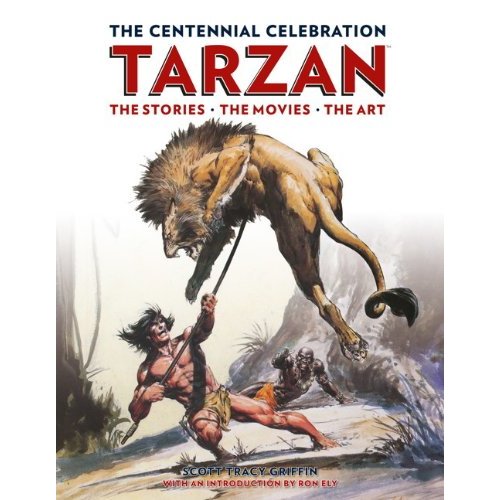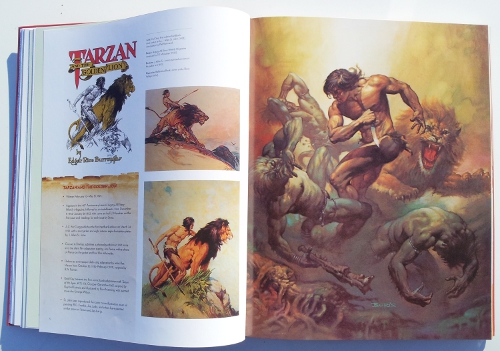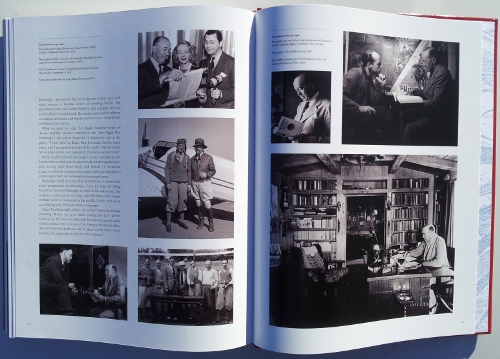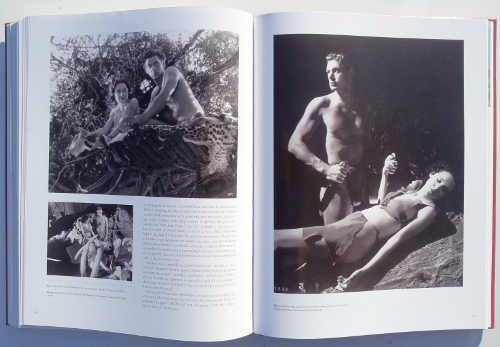Book Review – Tarzan: The Centennial Celebration
Posted 8 years ago by Rob Lammle Books

I first met Spider-Man in the cheesy live-action segments of The Electric Company. My first run-in with Superman was during his time as a member of the Super Friends, along with his super friends Batman, Robin, and Wonder Woman (I think we can all agree that the less said about Aquaman, the better). I yelled, “Hi-Yo, Silver! Away!” thanks to the Lone Ranger and Zorro serials that were broadcast on PBS after the Saturday morning cartoons were over. I can remember where I met all of these superheros, but I have no clue where or when I was first introduced to Tarzan.
I have a feeling there are a lot of us who just seem to instinctively know who Tarzan is. Since Edgar Rice Burroughs’ story of the ape man was first published 100 years ago, the character has become something of a ubiquitous icon, akin to someone like Uncle Sam. We may not know how or when we were formally introduced to Tarzan, but we know that anyone in a leopard skin cloth swinging from a vine could only be one person.
Although it might be difficult to pin down our own personal history with the character, Scott Tracy Griffin’s new book, Tarzan: The Centennial Celebration, provides great insight into how this Lord of the Jungle has become such an iconic figure in popular culture.

As the book’s title implies, Tarzan of the Apes was first published 100 years ago, in October 1912 by All-Story Magazine, a popular pulp magazine of the day. The editor of the magazine was so enamored with the story – and thought his readers would be, too – that the story was not serialized like most pulp fiction, but ran in it’s entirety in a single issue. It was later serialized into newspapers all across the country, before it was finally published as a novel in 1914. The book was a huge success and Burroughs was encouraged to write more – which he did, to the tune of 24 official sequels in the Tarzan canon.
But the Tarzan machine didn’t stop with prose on the page. The ape man was also the star of dozens of films spanning the silent era, the early talkies, the golden age of the studio system, and even into the modern age, including the Disney animation treatment in 1999. His jungle adventures have been featured in comic books, video games, on television, and Saturday morning serials, as well as merchandise like skateboards, lunchboxes, board games, and he even endorsed gasoline.

For his retrospective, Griffin features a brief synopsis and some behind-the-scenes history for each book, with the more popular novels garnering additional pages of cover art, comic book pages, photos from the films, and more. What could be a rather laborious half of the book in lesser hands, is wisely broken up by small sections that provide additional insight into the characters, the themes, and the world of Tarzan. For example, in between the entries for Tarzan and the Ant Men and Tarzan, Lord of the Jungle, we get a page discussing Tarzan’s use of language throughout the series, starting with his simple grunts and gestures, and later his mastery of English, French, Arabic, German, and Dutch, plus a variety of native tongues. These little mini-chapters cover topics and facets that wouldn’t have really belonged anywhere else, or, if they were included elsewhere, would have gotten lost. Having them highlighted like this is a brilliant way to add insight and information without getting bogged down in overly long, rambling pages that would be difficult to tie together into something coherent.
Later in the book, Griffin shifts focus away from the novels and delves into other media, such as radio, films, and comic books, that have incorporated Tarzan, if not directly adapted one of the novels. And even between these sections, the mini-chapters continue to show the depth of the series with more drawings and photos, as well as biographical information about Burroughs. The book is simply filled with all the Tarzan information you could possibly need.

You might have noticed that I’ve mentioned photos and artwork quite a few times so far, and that’s because this book is absolutely filled with visuals. Between comic book pages, 100 years of book covers, promotional material from the films, merchandise, and even just works of art from especially talented fans, the book has an image on nearly every one of its 319 pages. And if there’s not a picture on one page, chances are the facing page is a giant, full-bleed painting from Frank Frazetta, or a comic book cover by Joe Kubert. It’s clear that Griffin understands a big part of Tarzan’s appeal is the visual – the exotic locations, the epic man-vs-beast battles, the different interpretations of the character – and the book does not disappoint.
I really can’t say enough good things about Tarzan: The Centennial Celebration. With so much information, so many great photos and pieces of artwork, backed up by Griffin’s obvious authority and appreciation for the character, this is the definitive book on the legend of the ape man.

Tarzan: The Centennial Celebration from Titan Books is currently available at Amazon.com, BN.com, and your local independent bookstore.
-
Ben Rollier
-
Rob Lammle
-